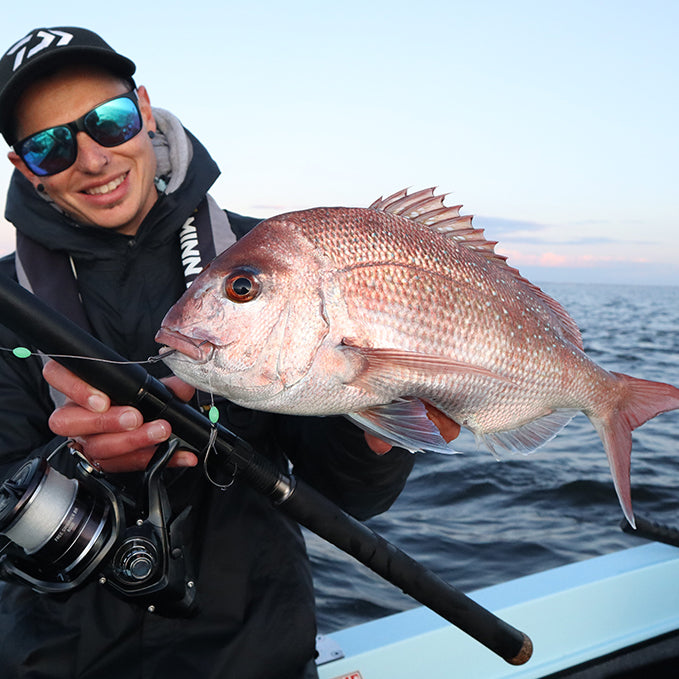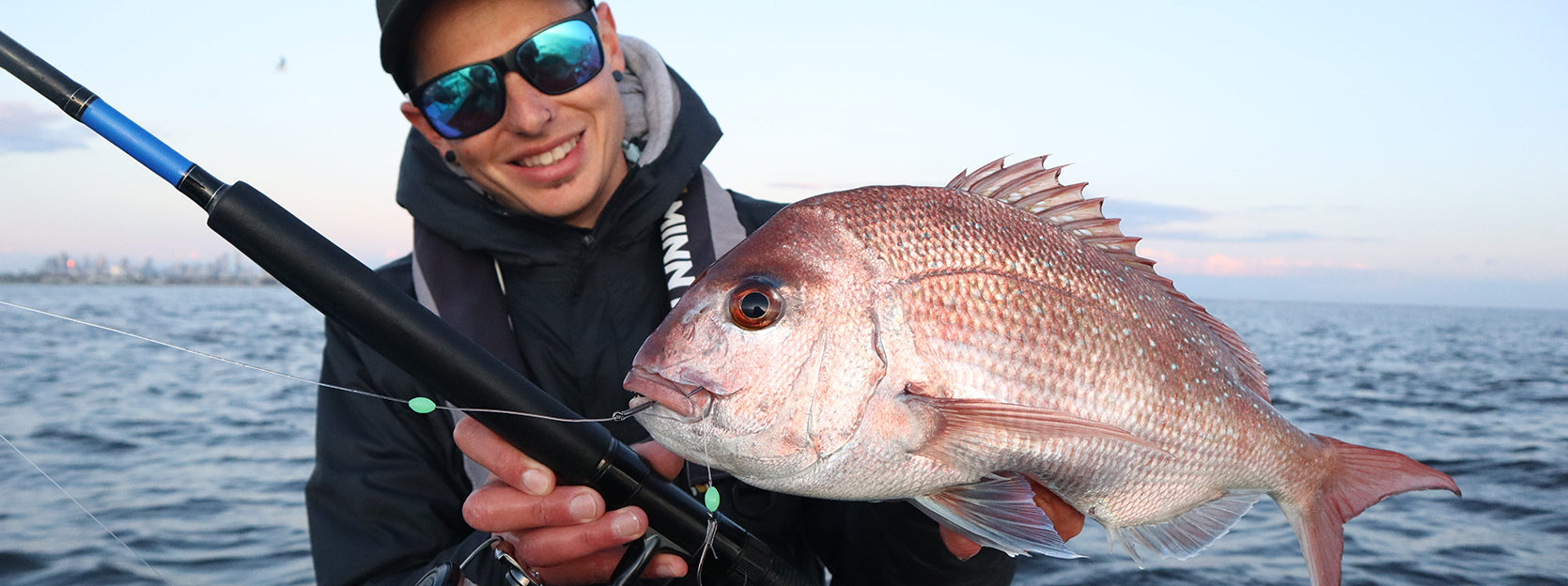Posted 01th March 2024
How to Fish with Burley


By Robert Thornton
There are many useful skills in fishing that are worth learning, especially those that have been refined over decades. These tips and tricks can broaden your angling vision, putting you in situations you haven’t found yourself in before, and teaching you lessons about your quarry that would otherwise go unlearned. Burleying is one of those skills.
Even if you don’t fish with bait there are many great reasons to learn how to fish with burley. In this blog we’re going to look at what burley is, the situations where anglers commonly employ burley, how to create an effective trail, and a few additional bits of advice. Let’s jump straight in!
What is burley?
Burley, simply put, is any bait items thrown or deployed into the water without terminal tackle in them. Known in the US as ‘chum’, it works as an attractant for the fish to your position.
Burleying or chumming can be as simple as throwing prawn heads into the water when using prawn tails for bait, but more commonly involves the use of multiple ingredients mixed together that are then deployed in vessels such as bags and cages.
Burley mixtures can be bought from bait shops; however, many burley users like to make their own concoctions, allowing them to tailor it to their own fishing.
Home-made mixtures can be made from literally anything, but they usually (not always) have a meat component, an oil component and dry component. Meat can be fish frames, old pilchards, prawn heads and so on. The oil element is used to bind everything together, and tuna oil (available from most bait shops) is a popular choice for this. Dry ingredients like breadcrumbs, pollard and chicken feed can help to adjust the consistency of the mixture and are themselves an additional attractant.
There is no right and wrong way to use burley, but there are things you can do to get the most out of it. Identifying situations where burley could be helpful is the first step to understanding this technique, so let’s take a look at some common scenarios.

Land-based burleying
Burleying is very common practise for those fishing land-based for a few reasons, but mostly it has to do with mobility. Fishing from the shore grants you less mobility than you would have in a boat. You can’t always go out and find fish from the shore, so the next best thing is to bring the fish to you. Once you have attracted fish to the area, it’s then possible to keep them there by maintaining your burley trail.
Land-based burleying is usually done either from a jetty or pier, on the rocks or on the beach. In most land-based scenarios the angler is relying on the turbulence of the water to break up and disperse the burley mixture gradually.
Land-based anglers will tend to use burley when they are fishing in one area, instead of moving from spot to spot. While more common in bait fishing circles, those fishing with lures have a lot to gain from the use of burley at times as well. While the idea is to attract the fish you plan to catch with your mixture, sometimes burley can attract smaller fish species, which are themselves burley for bigger fish. For example, anglers chasing big kingfish from the rocks often put out burley trails to attract slimy mackerel, yakkas and other baitfish to the area. The idea there is for the baitfish to draw kingfish in close enough for the anglers to cast lures to them.
When fishing from the shore, bags are the preferred vessel for dispersing your burley. While purpose-built burley bags exist, it’s easy enough to repurpose other things such as keeper nets, stockings and any mesh-style bags.
Burley logs (also known as burley bombs) are available from most good bait shops and are made to gradually break apart in a burley bag as the water laps against them. Dropping the bag straight in the water can work, however most seasoned burley users will position the bag so the water only hits it occasionally. Doing this ensures there is a sparse flow of burley in the water – just enough to get the fish interested, and not enough to feed them.
On the beach, bags are usually secured with a stake in the sand, allowing them to wash around as trickles back and forth. With each receding wave, tiny burley particles are washed back into the surf where they will hopefully be detected by nearby fish.
On the rocks the principal is similar. The bag is generally tied just above the water line, ideally where waves hit the bottom of the bag and slowly wash particles off the ledge.
On jetties and piers you have a few more options. One option is to lower a burley bag into the water, allowing to waft around as it slowly breaks apart.
Another option, and one that is popular for those chasing bottom dwelling fish like King George whiting, is a burley cage. Burley cages are usually weighted and can be sunk below the surface (sometimes to the bottom) where they stand a better chance of reaching the fish that live down deep.
Yet another option on the pier is a burley float. Burley floats are usually only a few inches tall, made from a plastic material, and function in the same way as a normal float. Unlike normal floats, however, burley floats can be packed with a burley mixture, and will slowly disperse these scents into the water around your rig. Such floats are popular for garfish in the southern states.

Burley from the boat
Once again, burley is employed by both bait and lure anglers in the boat. Burleying can be highly effective when done from a boat, but for it to be really successful, the boat needs to be stationary, and there should ideally be at least a small amount of current to create a trail.
The simplest form of burleying is one commonly used from boats, known as ‘cubing’. Cubing involves cutting up small pieces of bait matter (usually chunks of pilchard or something similar) and tossing handfuls of them in the water at regular intervals. The advantage of this technique is that it’s simple, and it allows the angler to control exactly how much burley is in the water. Anglers trying to find southern bluefin tuna often use this technique to draw tuna to their boat in deep water.
A burley bucket is another way to burley from the boat. A burley bucket is a bucket mounted on the outside of the boat at water level (usually at the transom) where ingredients are thrown in and then mashed up with a metal pole known as a burley masher or muncher. Holes in the bottom of the bucket allow particles to seep out and into the water. This method also allows some level of control for the angler, as the amount can be increased or scaled back depending on the situation.
Burley bags and cages are also popular from boats, however given the relative lack of water turbulence, anglers may have to manually break up the mixture by regularly moving and shaking the bag. Sharks and other undesirables can also cause problems by destroying bags and cages, which is why some anglers don’t use them from a boat.

Tricks of the trade
There are a few things that you can do to up your burley game, and many of them are so simple.
The most important is to pick a burley that is the right consistency for your fishing. Burley that is too loose can fall apart too quickly and drift away from the source. What this means is that fish will still smell it, but they won’t be able to trace it to the source – that is, your position. A burley that is too well formed and solid may not break apart fast enough and won’t put out a sufficient trail for attracting fish. Make sure you are the master of your mix!
Another thing is to make sure there is something to disperse and carry your burley, such as waves, wash, tidal currents, shore dump and other natural phenomena in the water. Burley can be broken up manually if needed, but it can be next to useless if there is nothing to carry it to the fish.
One tip for the boaties is to make sure your anchored boat isn’t swinging too much. When a boat swings the burley trail can become very random and difficult for fish to find their way to the source. It’s therefore important, at least in most scenarios, to make sure the front and back of your boat is stationary when you start your burley trail.
One final tip is to keep the trail consistent. A consistent burley trail means there is no reason for the fish to leave. When a trail starts to dry up, fish can lose interest and leave. On the other hand, if a trail becomes too rich it can end up attracting a range of undesirable species and make catching your target species all the more difficult. Keep an eye on your trail and make adjustments where necessary to ensure a consistent trail.
A trick in the arsenal
Burleying is not for everyone, but it’s definitely a very useful skill for any angler to know. Being able to attract fish to an area where it’s not possible or at least very difficult to find fish, is the sort of skill that can turn an unsuccessful session into a truly memorable one.
Burleying isn’t just a way to attract fish to your position, it’s a chance to learn about fish feeding behaviour, and also a great way to utilise any leftover bait or kitchen items!















